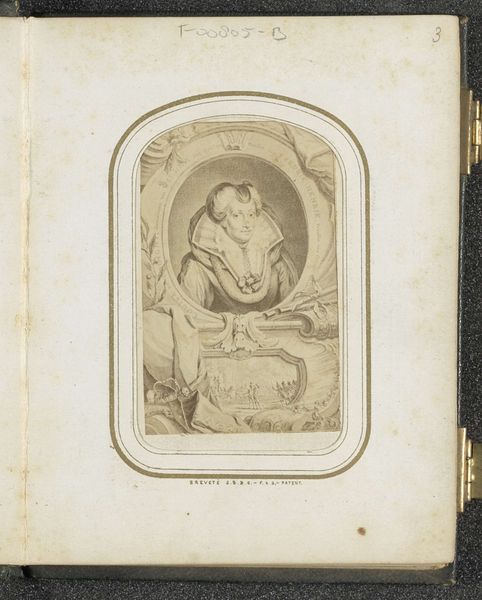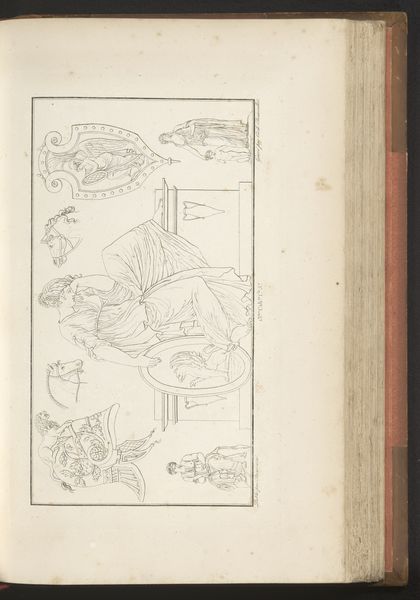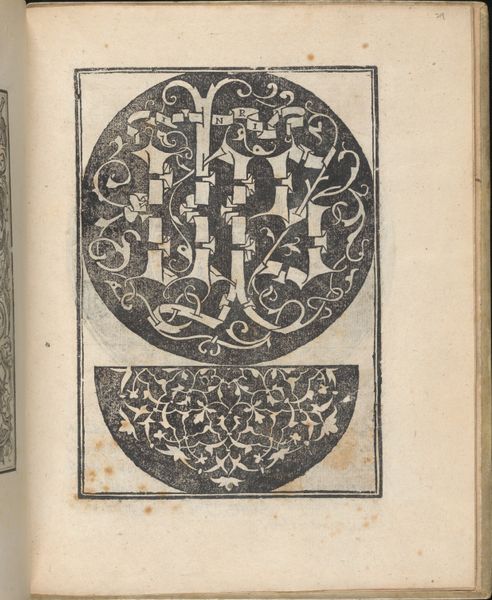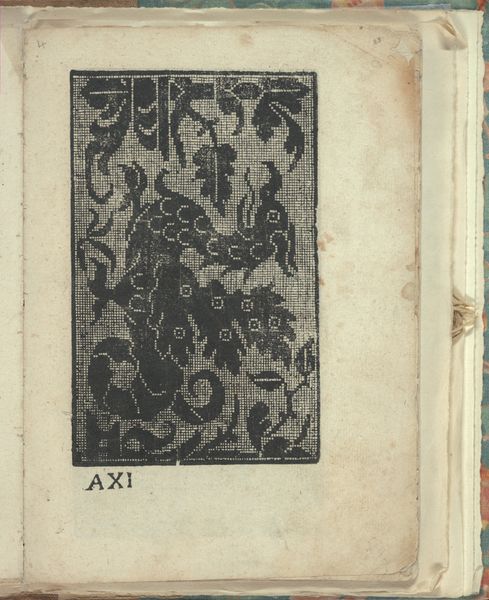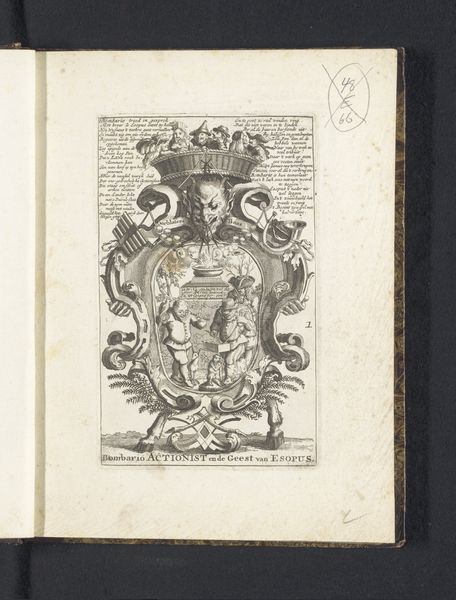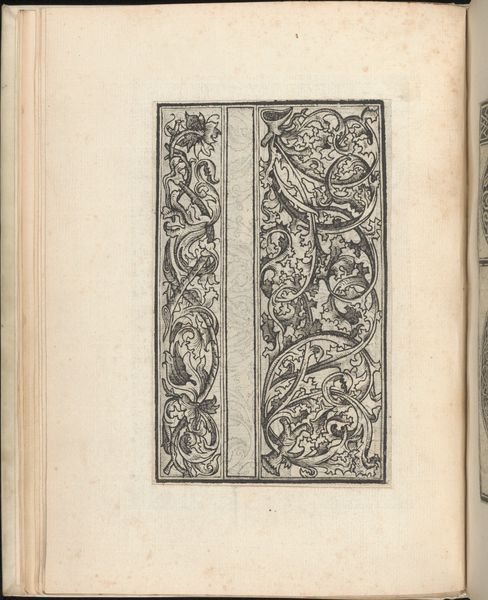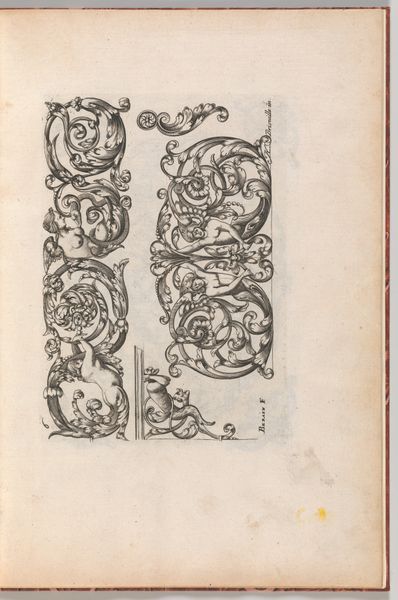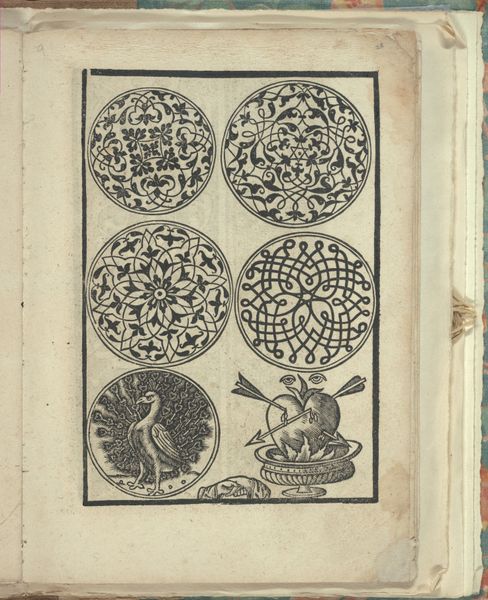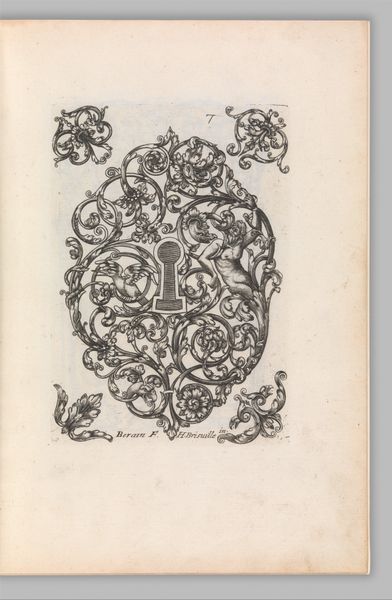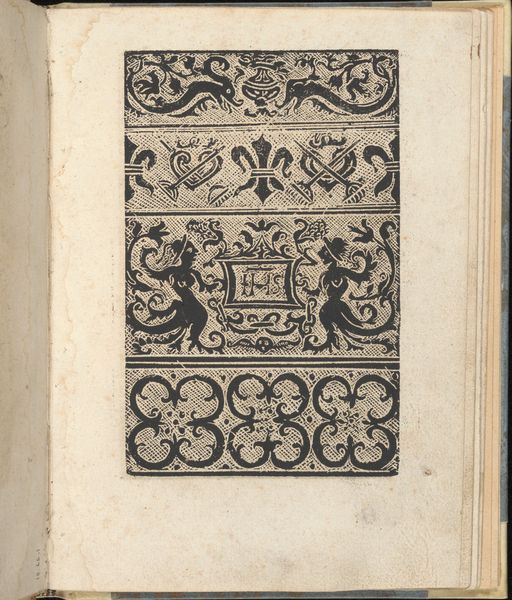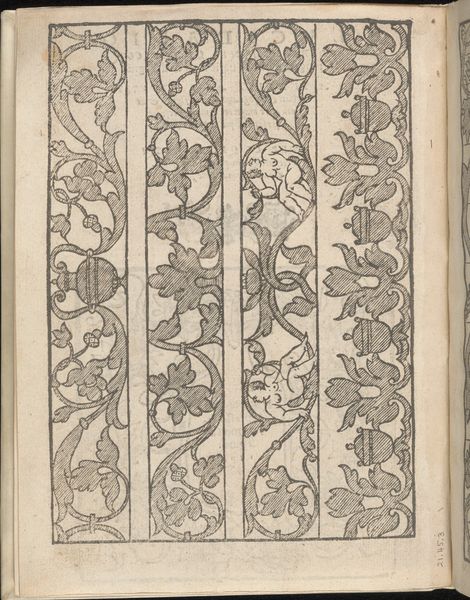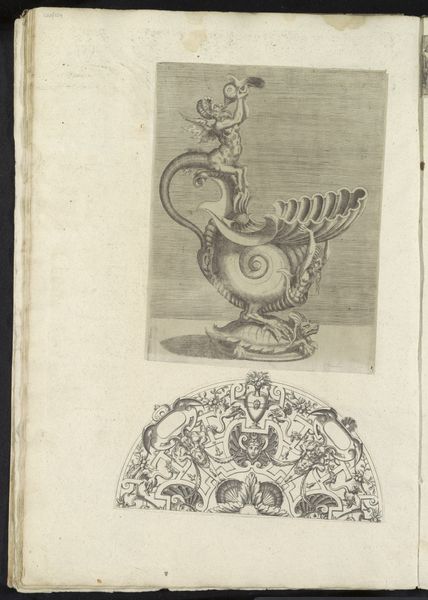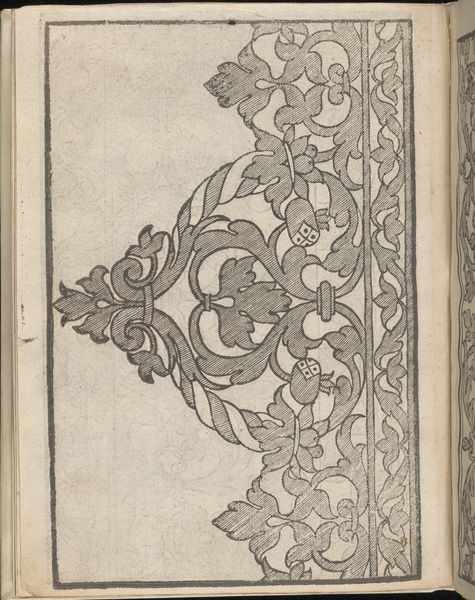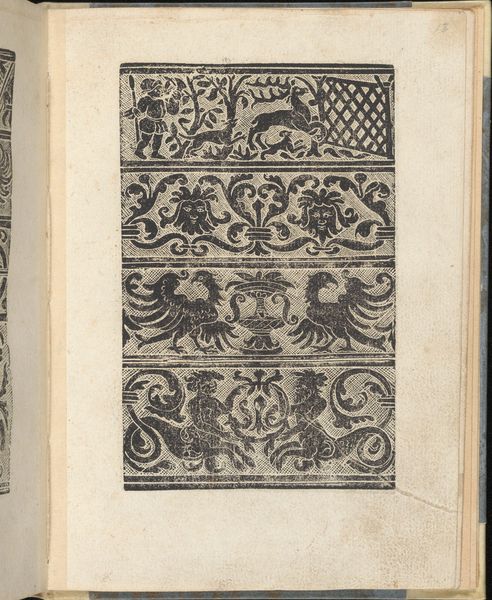
drawing, print, pen, engraving
drawing
pen drawing
book
11_renaissance
personal sketchbook
geometric
pen
engraving
Dimensions: Overall: 7 13/16 x 6 3/16 x 3/8 in. (19.8 x 15.7 x 1 cm)
Copyright: Public Domain
Editor: This is a page from "Essempio di recammi," created around 1530 by Giovanni Antonio Tagliente. It's a pen drawing that looks like a page from an embroidery pattern book. It shows a turtle inside of a wreath, surrounded by ribbons. There’s something quite charming and naive about its style, even a little humorous! What do you see in this piece? Curator: Well, beyond the charming image itself, I see a fascinating window into Renaissance social dynamics and gendered labor. Embroidery was, of course, largely associated with women and domestic spaces. The presence of this kind of instruction manual shows the intersection of art, craft, and economic activity within women's lives at that time. The turtle and the inscription "Ad Locum Tandem", are also very interesting symbolic elements. Do you have any thoughts about their significance? Editor: Not really. I mostly saw it as a pretty picture! So, the turtle and the inscription weren’t just decorative? Curator: Not likely! Consider how animals were often employed in Renaissance emblems and allegories. The turtle, known for its slow and steady pace, combined with the motto "Ad Locum Tandem," meaning "At Length to the Place", suggests perseverance and determination. It prompts questions about what "place" they were moving toward: what social and creative goals were women pursuing? We can start to interpret the embroidery not just as decorative craft but also as a form of agency and even resistance within constrained social norms. Editor: I never would have thought of embroidery in that way. So this book shows how women navigated their role in the Renaissance through their craft? Curator: Precisely! By analyzing seemingly simple images, we uncover rich narratives about the lives, labor, and aspirations of women in the Renaissance. Editor: That’s given me a whole new perspective on these historical images. Thanks for pointing it out! Curator: Of course! It’s amazing what historical and social context can bring to one's analysis of an artwork.
Comments
No comments
Be the first to comment and join the conversation on the ultimate creative platform.

